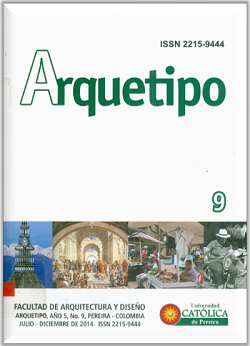Turin. Notes on architecture
Keywords:
Turín, history of architecture, baroque, NietzscheAbstract
This article is intended to refer to urban development and architecture representative of the city of Turin in northern Italy, widely recognized as an excellent laboratory for understanding the Baroque period. The city has been the subject of multiple prints by renowned personalities, including writer and German philosopher Friedrich Nietzsche, who spent his last years of lucidity in this city. In light of his descriptions, the theme of the research is conducted, highlighting the spiritual affinity that humans have with the character of the city, to finally understand that human identity presupposes the identity of the place and represents an extension of the places and things.
References
Chamberlain, L. (1998). Nietzsche en Turín. Una biografía íntima. Barcelona: Gedisa.
De Chirico, G. (1990[1919]). Sull´arte metafísica. Valori Plastici, 1, 4-5.
Gil García, J. (abril de 2010). El Misterio del Manto de Turín: de la ciencia a la Fe.
Periódico La Tarde. Pereira, Colombia.
Lynch, K. (1984). La imagen de la ciudad. Barcelona:Gustavo Gili.
Schultz, N. (1980). Genius Loci, Towards a Phenomenology of Architecture. Rizzoli: New York.
Zumthor, P. (2003). Atmósferas–Entornos Arquitectónicos, las cosas a mí alrededor. Barcelona:Gustavo Gili.

